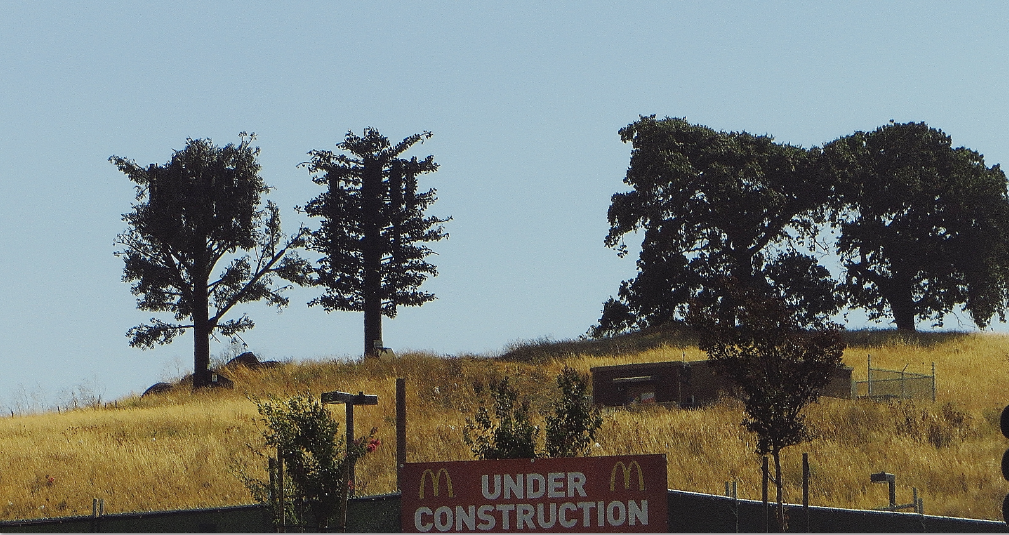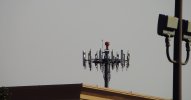A couple of recent reports, based on UFO sighting numbers, which have apparently fallen off a cliff...
Our Skies Are More Watched Than Ever, So Why Are Reported UFO Sightings on the Decline?
Gizmodo, 2nd July 2018
And here's that Syracuse New Times piece:
Close encounters with UFOs are getting harder to find
Syracuse New Times, 5th June 2018
Our Skies Are More Watched Than Ever, So Why Are Reported UFO Sightings on the Decline?
Gizmodo, 2nd July 2018
Reported UFO sightings have been declining in the United States for the last few years, according to the statistician tasked with making sense of all the data acquired by the leading civilian UFO investigation group.
The Mutual UFO Network (MUFON) is a non-profit that investigates reports of UFO sightings. The group encourages people who have close encounters to report their sightings on the MUFON site. The organization claims it receives about 7,000 reports per month—but numbers have been on a steady decline since around 2012.
“There definitely has been a fall off of late,” MUFON statistician David C. Korts told Gizmodo. “It hasn’t been a straight line. But in looking at those numbers, it was a peak in 2012 and it’s been a 30 to 40 percent drop from 2012 to 2017.”
Korts is a retired statistician who is currently studying the data to learn more about UFO sightings, like where they occur the most and how they’re changing over time.
Korts isn’t the only one who has noticed the shift. Cheryl Costa—a writer who was named International UFO Congress’s 2018 Researcher of the Year—recently reviewed reported sightings data from both MUFON and the National UFO Reporting Center (NUFORC) over the last 17 years, and reported her findings in the Syracuse New Times. Her analysis showed that after a steady increase in sighting reports from 2001 to 2012, reports have been on the decline.
While both MUFON and NUFROC take online reports of sightings, MUFON field investigators examine reports and attempt to filter out hoaxes, mistakes, and objects that can be identified. According to Korts, MUFON ends up clearing out about half the reports that people submit. “I work with a highly filtered, highly clean data set,” Korts explained.
With this data set, he hopes to see how certain UFO shapes (like saucers and triangles) and colors, have increased or decreased over time. And he wants to find which areas have more and less sightings, after adjusting for factors like population and area size. But one thing is already very apparent: fewer people are reporting sightings.
“At this point, it’s unclear. It’s perplexing,” he said. “I don’t know why it is. I think it’s an interesting question. That’s the kind of thing you discover by doing this kind of work.”
This is a curious trend, given that almost every other aspect of our world is better documented than ever before. More people are carrying cameras on them and more people have access to the internet and can therefore share their strange observations.
And here's that Syracuse New Times piece:
Close encounters with UFOs are getting harder to find
Syracuse New Times, 5th June 2018
UFO sightings are in a slump!
Longtime researchers have known that there is a six- to seven-year up-and-down UFO sighting cycle. During this cycle the UFO sightings seem to rise incrementally from a baseline number, hit a peak, then decline back toward the baseline. Then the process typically starts all over again.
Using newly compiled numbers based on NUFORC (National UFO Reporting Center) and MUFON (Mutual UFO Network) sighting databases, we now have a national picture of sightings spanning the first 17 years of the 21st century.

Between 2012 and 2014 we had a peak average of 13,500 yearly sighting reports. Then in 2015, the yearly sightings reports fell from the peak average of 11 percent to 11,975. In 2016 the sighting reports continued to fall to 21 percent from the peak average to 10,602.
It was at this point I thought the sighting numbers would start climbing again, but NO! The yearly sightings reports sustained a downward trend from the peak average to 7,837. That’s a whopping 41 percent drop from the three-year peak average years.
During the 2016 to 2017 period, New York state rose to No. 4 nationally, rising from the No. 6 spot for individual state UFO sightings. Yet even the Empire State has seen a staggering drop in sighting reports to a number not seen since 2010. During the peak average period from 2012 to 2014, New York averaged 577 sighting reposts, but in 2017 that number fell to 325, down 43 percent.

I wish to offer some speculation. In both the national graph and the New York state graph we see relatively flat sighting report numbers from 2001 to 2006. This flatness is considered an artifact of reporting, as broadband internet access was still growing in most areas. Access to broadband is a major driver in people having routine use of web reporting services such as NUFORC and MUFON.
Using both the national and the New York state charts, between 2006 and 2010 we start seeing a rise-and-fall pattern. Then in 2011 we clearly see the rise cycle start again. Many researchers think that the unusual 2012 reporting spike was simply because of the Mayan calendar media ballyhoo that simply had more people outside looking up. Taking that spike into consideration, the classic seven-year UFO sighting cycle is clearly shown from 2011 to 2017.
The big question is will the sighting trend continue downward to a new baseline or start cycling upward again?
A word of caution from a wise man: “For every complex problem there is a simple answer, which is usually wrong.”






